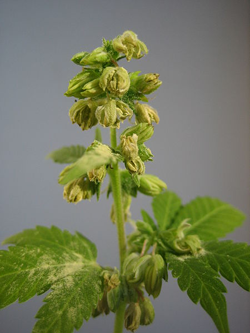 Illinois’ history of DUI legislation follows the course of most states, from changing the limit for driving impairment to .08% and enacting Child Endangerment Laws that enhances penalties for DUI drivers with minors in their vehicles. DUI arrests are going up, laws are becoming more fine-tuned and stricter, and overall the nation’s traffic fatalities are going down. The most recent changes to Illinois law has to do with how to fund DUI prevention programs, and a new law is allowing funds from DUI convictions to be funneled toward those programs. Here is an overview of the highlights of Illinois’ change in drunk driving legislation over the years:
Illinois’ history of DUI legislation follows the course of most states, from changing the limit for driving impairment to .08% and enacting Child Endangerment Laws that enhances penalties for DUI drivers with minors in their vehicles. DUI arrests are going up, laws are becoming more fine-tuned and stricter, and overall the nation’s traffic fatalities are going down. The most recent changes to Illinois law has to do with how to fund DUI prevention programs, and a new law is allowing funds from DUI convictions to be funneled toward those programs. Here is an overview of the highlights of Illinois’ change in drunk driving legislation over the years:
BAC Changes Over the Years
In 1958, Illinois established the illegal BAC limit as .15%, and just nine years later in 1967 lowered the state’s illegal limit down to .10%. It would be 30 more years before Illinois changed the illegal BAC limit to .08%.
Many New DUI Laws in the last ten years
The 2000s saw the most changes to Illinois drunk driving legislation, with at least 6 changes made to Illinois DUI law in just the last year. Effective January 1, 2012, a driver arrested for DUI could have their vehicle impounded and be charged administrative fees for that vehicle’s impoundment. The vehicle could be handled by the municipality in any way it saw fit if the vehicle went unclaimed.
Another recent DUI law passed in 2012 related to school bus drivers. The employers of school bus drivers may request a blood or alcohol test if there is reasonable suspicion that the employee may be under the influence.
Tougher DUI Penalties
Milestones in Illinois DUI law include the establishment of the Zero Tolerance Policy, passed in January 1995, which states that any driver under age 21 with any trace of alcohol or drugs in their system will automatically lose their driving privileges. In January 1993, Illinois established the Child Endangerment Law, which set tougher penalties for drivers convicted of DUI who had a passenger 16 or younger in the vehicle.
In January 1986, the Crime Victims Bill of Rights was expanded to include DUI victims, and that same year the Statutory Summary Suspension Program was put into place which allowed for the automatic suspension of a person’s driver’s license if they refused to submit to or failed a chemical test after a DUI arrest.
Most Recent and Far-Reaching DUI Legislation
In January 2004, Illinois passed a law which made it illegal for anyone to operate a watercraft or snowmobile while under the influence. Since January 2009, the state of Illinois has required even first-time DUI offenders to use a breath alcohol ignition interlock device (BAIID) and any vehicle they drive must also be equipped with a BAIID.
In August 22, 2012, House Bill 5021 was signed, which allows funds received from DUI convictions to go to local law enforcement agencies for alcohol-related crime prevention and enforcement, sparking a debate about whether this will create a financial incentive for police to stop drivers in cases that could have questionable probable cause.
![By Fleur-Design [CC-BY-2.0 (http://creativecommons.org/licenses/by/2.0)], via Wikimedia Commons](/wp-content/uploads/2013/01/kyskyline.png)

 Judge Susan Watters was required by
Judge Susan Watters was required by  Illinois’ history of DUI legislation follows the course of most states, from changing the limit for driving impairment to .08% and enacting Child Endangerment Laws that enhances penalties for DUI drivers with minors in their vehicles.
Illinois’ history of DUI legislation follows the course of most states, from changing the limit for driving impairment to .08% and enacting Child Endangerment Laws that enhances penalties for DUI drivers with minors in their vehicles.  Georgia has been overdue for DUI law reform, and in April the State Senate expanded SB 236, an Act which allows repeat DUI offenders to have more flexibility in their driving privileges.
Georgia has been overdue for DUI law reform, and in April the State Senate expanded SB 236, an Act which allows repeat DUI offenders to have more flexibility in their driving privileges.